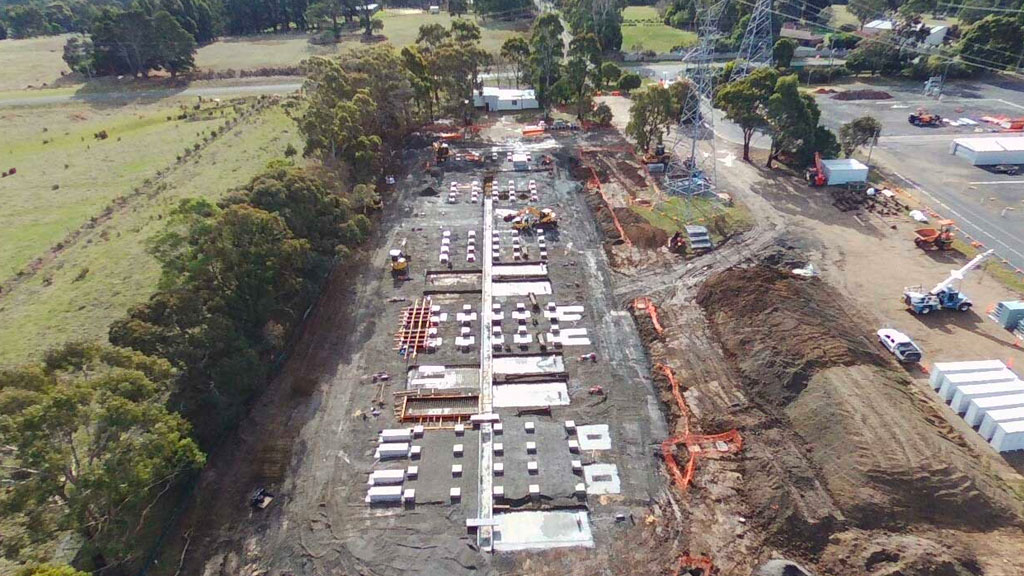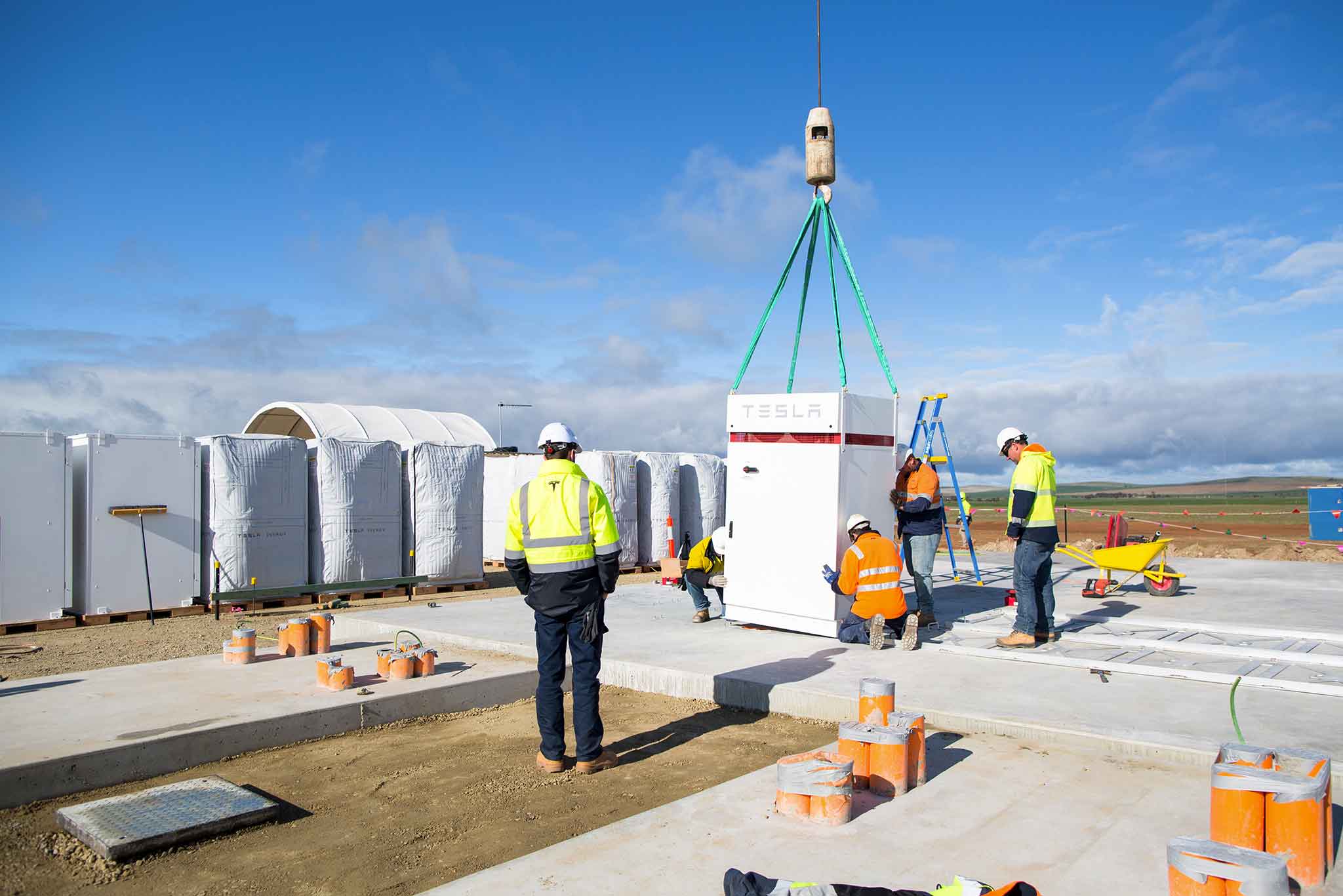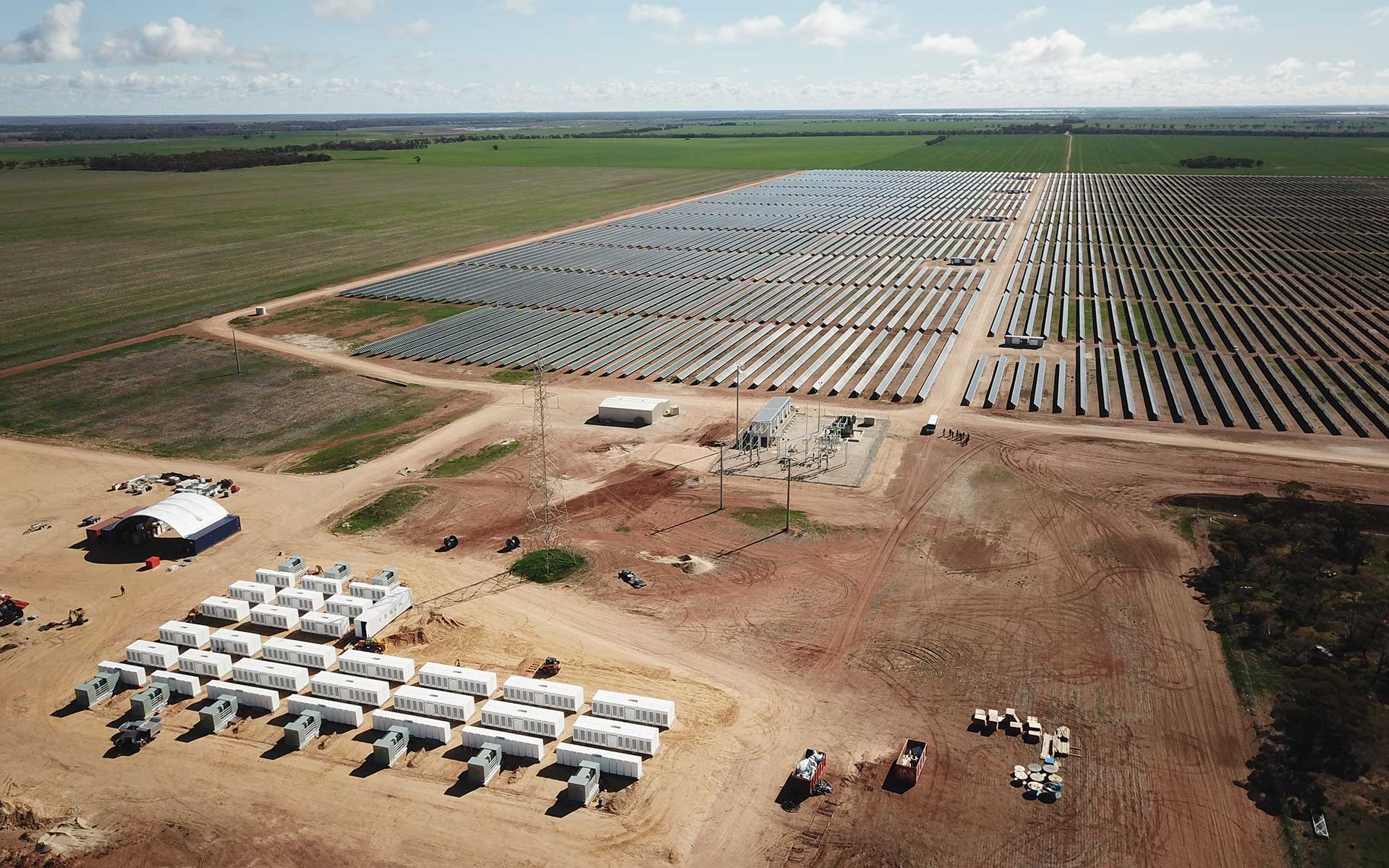Summary
$25 million will be provided to a consortia led by Spotless Sustainability Services to build Ballarat Energy Storage System (BESS) – a 30 megawatt (MW) / 30 megawatt-hour (MWh) large-scale, grid-connected battery located at the Ballarat electricity station (Ballarat Area Terminal Station (BATS).
It is being developed by NuvoGroup (owned by Spotless). Fluence (a AES-Siemens joint venture) is the battery provider, AusNet Services is providing the equity, EnergyAustralia is the long-term offtaker, and ARENA and the Victorian Government are providers of grant funding.
Key results
Commissioned in 2018, the BESS was the first standalone battery-based energy storage system installed in front of the meter and directly connected to the transmission network in Australia — and the first grid-scale battery-based storage system commissioned in the state of Victoria. The project was constructed in nine months and is capable of dispatching services for all eight Frequency Control Ancillary Services (FCAS) markets and energy to the National Electricity Market (NEM).
The BESS was a consortium project undertaken by the Spotless / Downer Group, Fluence, AusNet Services, and EnergyAustralia. Spotless provided the lead in forming the consortium, Fluence supplying and maintaining the battery energy storage system, AusNet funding and owning the asset, with EnergyAustralia acting as the market intermediary.
As one of the first large-scale battery systems built in Australia, the BESS has demonstrated flexibility and adaptability of battery based assets and their ability to support higher penetrations of renewable energy. In turn this has provided network stability and helped reduce congestion in Victoria’s electricity grid, as well as assisted with the management of price volatility and reliability risks during high demand periods.
Learn more
How the project works
The Ballarat Energy Storage System (BESS) led by Spotless, Nuvo Group, AusNet Services will store energy at times of relatively low value. The battery will use stored energy and use it at times of relatively high value. The project will also examine providing other grid services such as frequency control ancillary services (FCAS) and, should it be established under the electricity market rules, a Fast Frequency Response (FFR).
Area of innovation
The Ballarat Energy Storage System project will help storage become a trusted system solution, which in turn will influence both regulatory and market responses to system security issues around increasing intermittent renewable penetration. This could help prevent other response measures or long term policy/investment decisions which would otherwise curtail renewable energy investment. Through knowledge sharing, this project will demonstrate the value of battery services and assist to bridge the current gap to commercial viability, allowing other similar battery storage projects to progress without subsidy.
Benefit
The Ballarat Energy Storage System project will demonstrate how batteries can help provide grid stability and support on a congested transmission terminal, at a critical location, reducing the need to expand the substation. The battery will be capable of powering 20,000 homes for an hour.
Note
ARENA and the Victorian Government will jointly provide $25 million in funding for both this project and the Gannawarra Energy Storage System (GESS).










